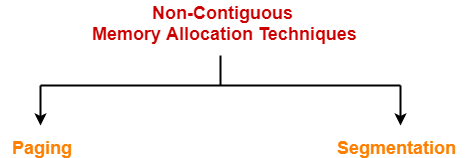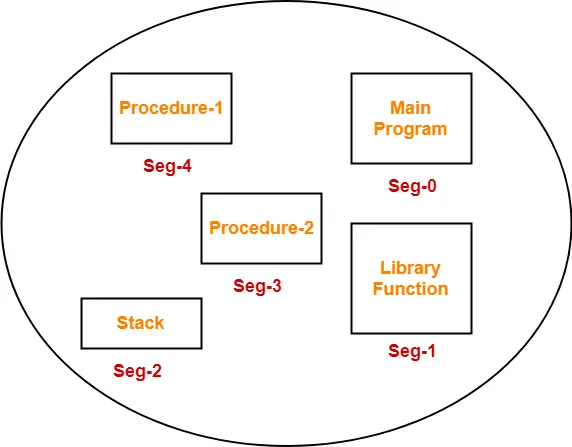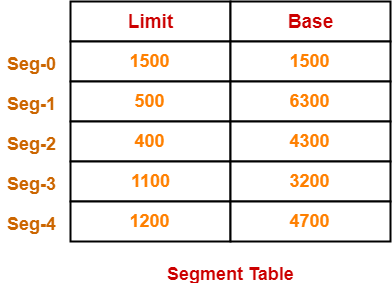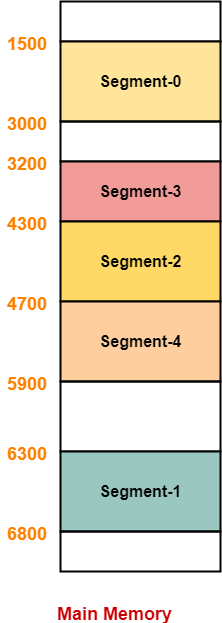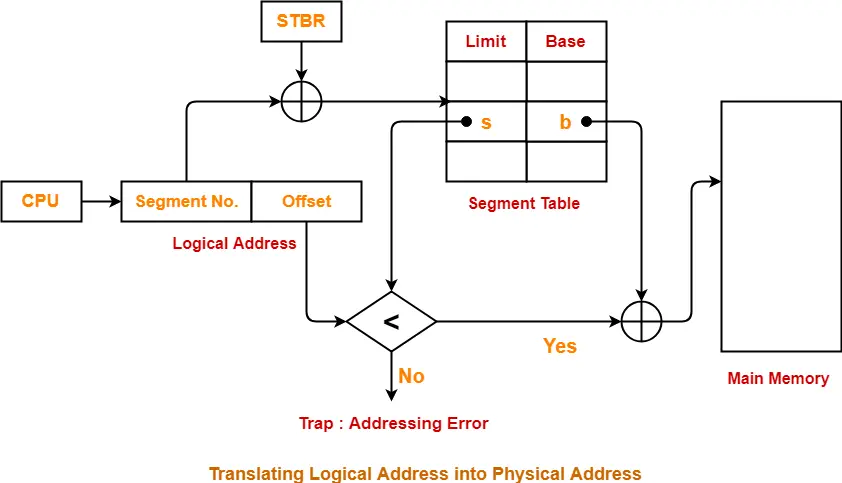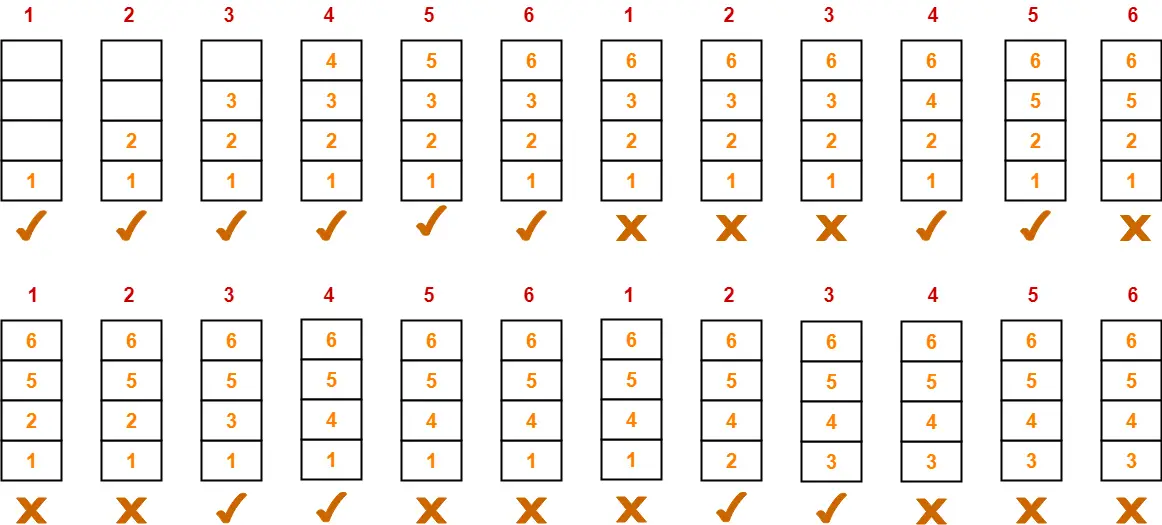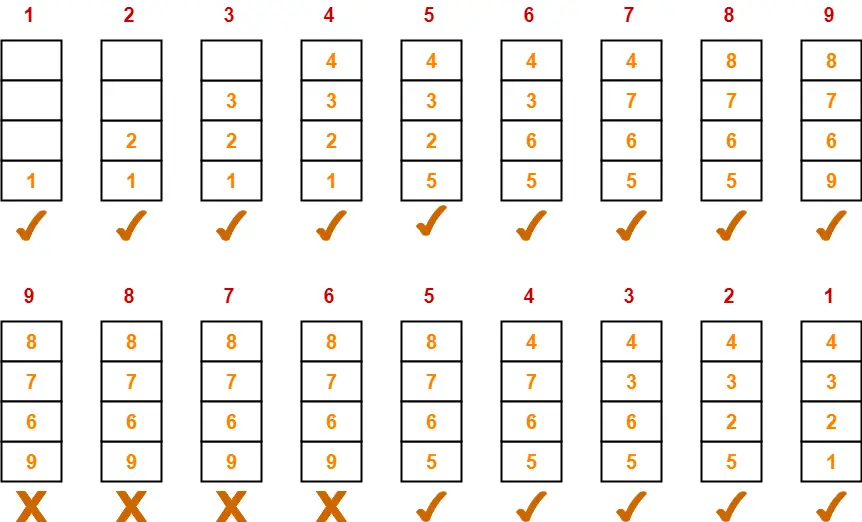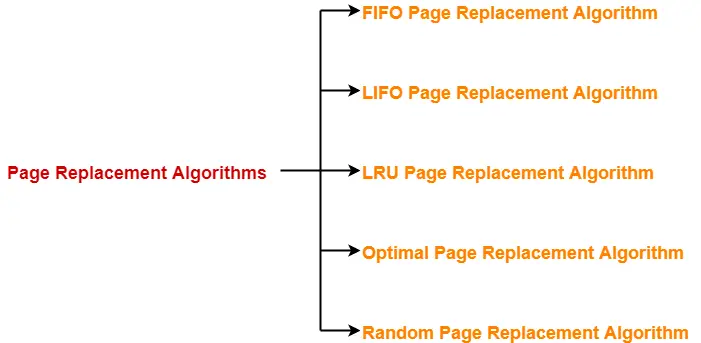Segmentation in OS-
Before you go through this article, make sure that you have gone through the previous article on Segmentation in OS.
We have discussed-
- Like Paging, Segmentation is another non-contiguous memory allocation technique.
- Segmentation divides the process into meaningful segments.
- Segment table stores the information about each segment of the process.
In this article, we will discuss a practice problem based on segmentation.
PRACTICE PROBLEM BASED ON SEGMENTATION-
Problem-
Consider the following segment table-
| Segment No. | Base | Length |
| 0 | 1219 | 700 |
| 1 | 2300 | 14 |
| 2 | 90 | 100 |
| 3 | 1327 | 580 |
| 4 | 1952 | 96 |
Which of the following logical address will produce trap addressing error?
- 0, 430
- 1, 11
- 2, 100
- 3, 425
- 4, 95
Calculate the physical address if no trap is produced.
Solution-
In a segmentation scheme, the generated logical address consists of two parts-
- Segment Number
- Segment Offset
We know-
- Segment Offset must always lie in the range [0, limit-1].
- If segment offset becomes greater than or equal to the limit of segment, then trap addressing error is produced.
Option-A: 0, 430-
Here,
- Segment Number = 0
- Segment Offset = 430
We have,
- In the segment table, limit of segment-0 is 700.
- Thus, segment offset must always lie in the range = [0, 700-1] = [0, 699]
Now,
- Since generated segment offset lies in the above range, so request generated is valid.
- Therefore, no trap will be produced.
- Physical Address = 1219 + 430 = 1649
Option-B: 1, 11-
Here,
- Segment Number = 1
- Segment Offset = 11
We have,
- In the segment table, limit of segment-1 is 14.
- Thus, segment offset must always lie in the range = [0, 14-1] = [0, 13]
Now,
- Since generated segment offset lies in the above range, so request generated is valid.
- Therefore, no trap will be produced.
- Physical Address = 2300 + 11 = 2311
Option-C: 2, 100-
Here,
- Segment Number = 2
- Segment Offset = 100
We have,
- In the segment table, limit of segment-2 is 100.
- Thus, segment offset must always lie in the range = [0, 100-1] = [0, 99]
Now,
- Since generated segment offset does not lie in the above range, so request generated is invalid.
- Therefore, trap will be produced.
Option-D: 3, 425-
Here,
- Segment Number = 3
- Segment Offset = 425
We have,
- In the segment table, limit of segment-3 is 580.
- Thus, segment offset must always lie in the range = [0, 580-1] = [0, 579]
Now,
- Since generated segment offset lies in the above range, so request generated is valid.
- Therefore, no trap will be produced.
- Physical Address = 1327 + 425 = 1752
Option-E: 4, 95-
Here,
- Segment Number = 4
- Segment Offset = 95
We have,
- In the segment table, limit of segment-4 is 96.
- Thus, segment offset must always lie in the range = [0, 96-1] = [0, 95]
Now,
- Since generated segment offset lies in the above range, so request generated is valid.
- Therefore, no trap will be produced.
- Physical Address = 1952 + 95 = 2047
Thus, Option-(C) is correct.
To watch video solution and practice other problems,
Next Article- Segmented Paging in OS
Get more notes and other study material of Operating System.
Watch video lectures by visiting our YouTube channel LearnVidFun.
